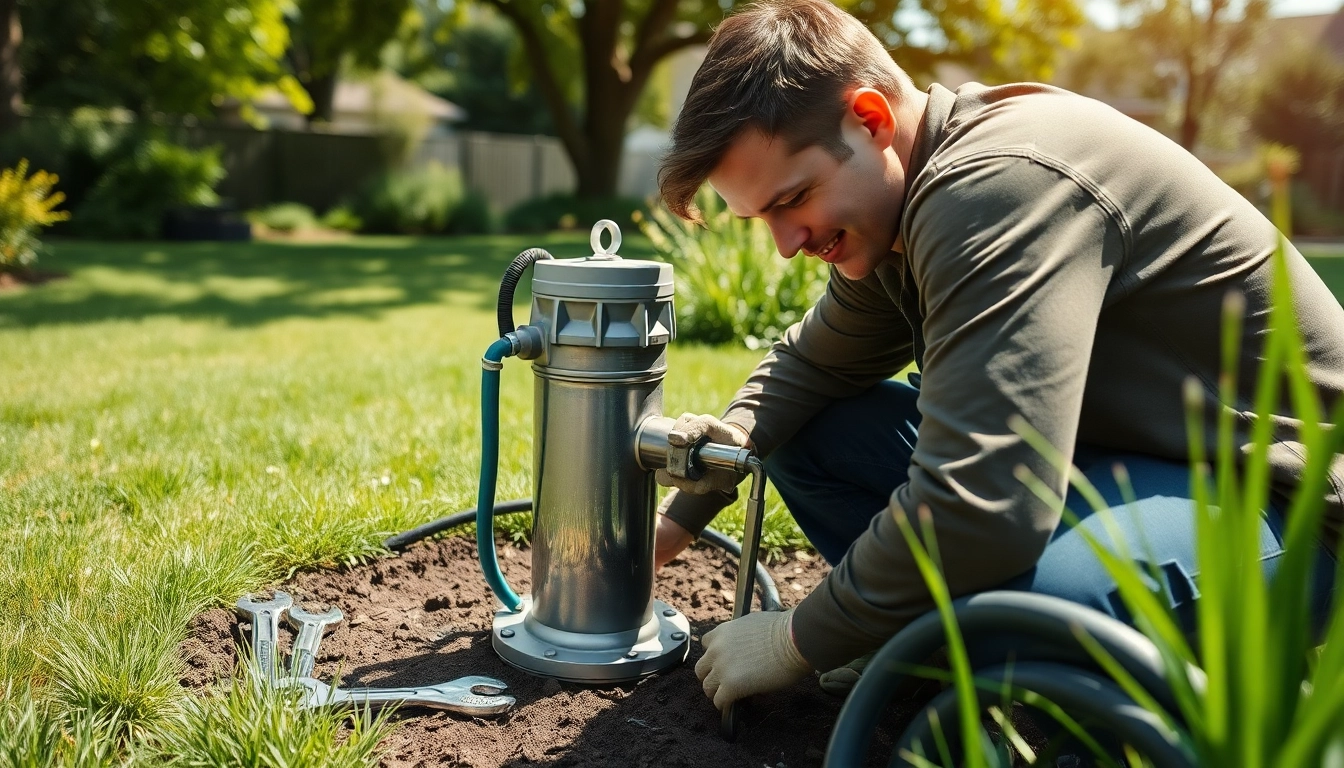Understanding Well Pump Replacement
A well pump plays a crucial role in a residential or agricultural water supply system, transporting water from the ground to the surface. However, just like any other mechanical device, well pumps can wear out or suffer from performance issues over time, necessitating replacement. Understanding when and how to replace a well pump can save homeowners time, money, and a lot of frustration. In this guide, we’ll dissect everything you need to know about well pump replacement, including identification of pump types, reasons for replacement, costs involved, and the steps necessary for a successful replacement process.
What is a Well Pump?
A well pump is a mechanical device that extracts groundwater from a well to supply it to a home or agricultural operation. The type of well pump used often depends on the depth of the well and the quantity of water needed. Submersible pumps, jet pumps, and solar pumps are some standard options available, each serving distinctive purposes in varied contexts.
Why Replacement is Necessary
- Wear and Tear: Constant use can lead to mechanical failure.
- Obsolescence: Advances in technology may make older models less efficient.
- Low Water Output: A decrease in the water supply can indicate a failing pump.
- Water Quality Issues: Pump performance may impact water quality, leading to contamination.
Signs Indicating Pump Failure
Identifying signs of a failing well pump is essential for timely replacement. Look for these indicators:
- Inconsistent Water Pressure: Fluctuating water pressure may indicate an internal problem.
- Strange Noises: Clicking or grinding sounds can signal mechanical failure.
- Low Yield: A sudden drop in water output often precedes pump failure.
- Regular Cycling: Pumps that turn on and off rapidly are likely malfunctioning.
Types of Well Pumps
Submersible Well Pumps
Submersible pumps are designed to be submerged underwater in a well, making them highly efficient for deep wells. They operate by pushing water to the surface rather than pulling it, which minimizes energy usage and allows for higher yield. Typically, these pumps have a lifespan of up to 15 years if maintained properly.
Jet Pumps
Jet pumps are installed above ground and use suction to draw water up from the well. They are typically used in shallow wells and can be an economical choice for households with lower water demand. However, they are less efficient than submersible pumps and can only be used to a limited depth.
Solar Well Pumps
As renewable energy becomes increasingly popular, solar well pumps are emerging as viable alternatives. They harness solar energy to pump water, making them ideal for remote locations without access to electricity. While the initial investment may be higher, operational costs are often significantly lower compared to traditional pumps.
Cost Factors in Well Pump Replacement
Understanding Average Repair Costs
The expenses associated with well pump replacement can vary significantly based on multiple factors, including the type of pump, depth of the well, local labor costs, and any additional infrastructure work that may be needed. On average, costs can range from $1,800 to $6,000, depending on these elements.
Material vs. Labor Costs
When planning for well pump replacement, it’s crucial to differentiate between material and labor costs. Material costs include the pump itself, piping, and fittings, while labor costs encompass the installation process. Generally, labor costs can account for 30-50% of the overall expense, making it vital to choose a qualified technician.
DIY vs. Professional Installation
Some homeowners may consider a DIY approach to save on costs. While this can be feasible for knowledgeable individuals, it’s crucial to understand that improper installation can lead to further issues, potentially outweighing any initial savings. Professional installation offers peace of mind through warranty coverage and ensures compliance with local codes and standards.
Preparing for Well Pump Replacement
Tools and Equipment Needed
Before embarking on a well pump replacement, ensure you have the necessary tools. This may include:
- Wrench sets
- PVC pipe cutters
- Drilling equipment
- Safety gear (gloves, goggles)
- Pump hoist or well puller
Safety Considerations
The safety of both the individual and the property should be paramount while replacing a well pump. Always consult local regulations regarding electrical connections and ensure you are aware of potential hazards, such as submerged electricity sources. It may also be advisable to have an additional person present to assist during the replacement process.
Site Assessment and Permits
Prior to commencing installation, assess the site thoroughly. This includes checking the well’s depth, water output, and condition. Additionally, be aware of local regulations regarding well pump installations as permits may be required.
Steps to Replace a Well Pump
Removing the Old Pump
Begin by disconnecting power to the pump and removing any obstructions from the wellhead. Use the appropriate hoist to carefully pull the old pump from the well, ensuring not to damage any surrounding infrastructure. Inspect the existing components for additional issues that may also require attention.
Installing the New Well Pump
Once the old pump is removed, prepare the well for installation. Ensure that the new pump is compatible with the depth and diameter of the well. Follow the manufacturer’s instructions carefully for assembly and installation. Once set up, reattach any necessary fittings, restore power, and carefully lower the new pump into the well.
Testing and Maintenance Tips
After installation, test the pump for proper operation. Look for consistent water pressure and check for leaks at all connections. Regular maintenance is essential for longevity; schedule seasonal inspections, clean filters, and check electrical connections to ensure optimal performance.
